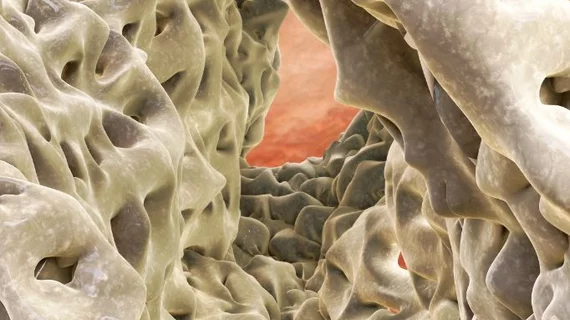Ultrasound measurements can predict osteoporosis, study shows
Bone cortical thickness measurements obtained via ultrasound could serve as an early predictor of osteoporosis or osteopenia, new research shows.
Experts shared their findings recently in Academic Radiology. There, they detailed how they compared the measurements of three bones—the radius, tibia and second metatarsal—of 200 volunteers who had undergone prior bone mineral density (BMD) measurements to evaluate the ultrasound method’s accuracy. Through this, they were able to determine that the cortical thickness CoT measurements of the radius and tibia had high sensitivity and positive predictive value in identifying patients with abnormal femoral T-scores.
Traditionally, BMD measurements are obtained via dual-energy X-ray absorptiometry (DXA) or CT scans. However, these methods are not without their disadvantages, corresponding author of the paper, Serap Gencer, MD, from the Department of Radiology at Ankara Atatürk Sanatorium Training and Research Hospital in Turkey, and colleagues explained:
Both DXA and other X-ray imaging modalities such as quantitative computed tomography (QCT) have many disadvantages such as unavailability, application of ionizing radiation, and uncertainties in the interpretation.”
Conversely, measurements obtained via ultrasound can be achieved without the use of ionizing radiation, are cost-effective and readily available, the authors wrote. But there is limited research available comparing the method’s performance to the current standard of care.
When the experts involved in this study completed their comparison of the modalities, they found ultrasound CoT measurements of the radius and tibia to be in line with both femoral and vertebral measures obtained via DXA scans. A multivariate analysis revealed radius CoT to be independently predictive in distinguishing patients from the control group who had normal abnormal T-scores.
“These findings are supported by studies showing that CoT measurement makes a significant contribution to fracture prediction,” the authors disclosed.
They went on to suggest that their method could be a valuable alternative tool for BMD estimation when resources are limited, however, it needs to be more thoroughly evaluated in larger, more comprehensive research.
The study abstract can be viewed here.

